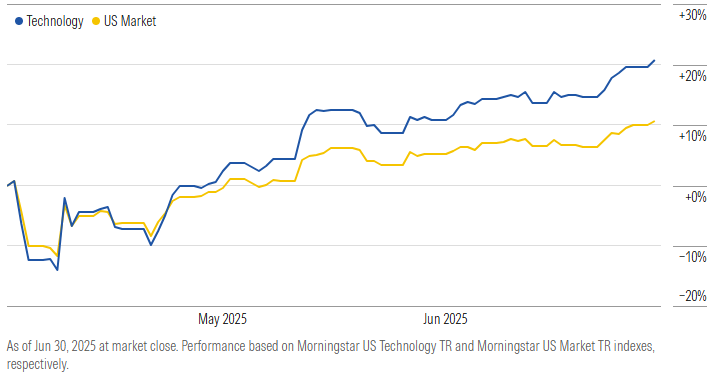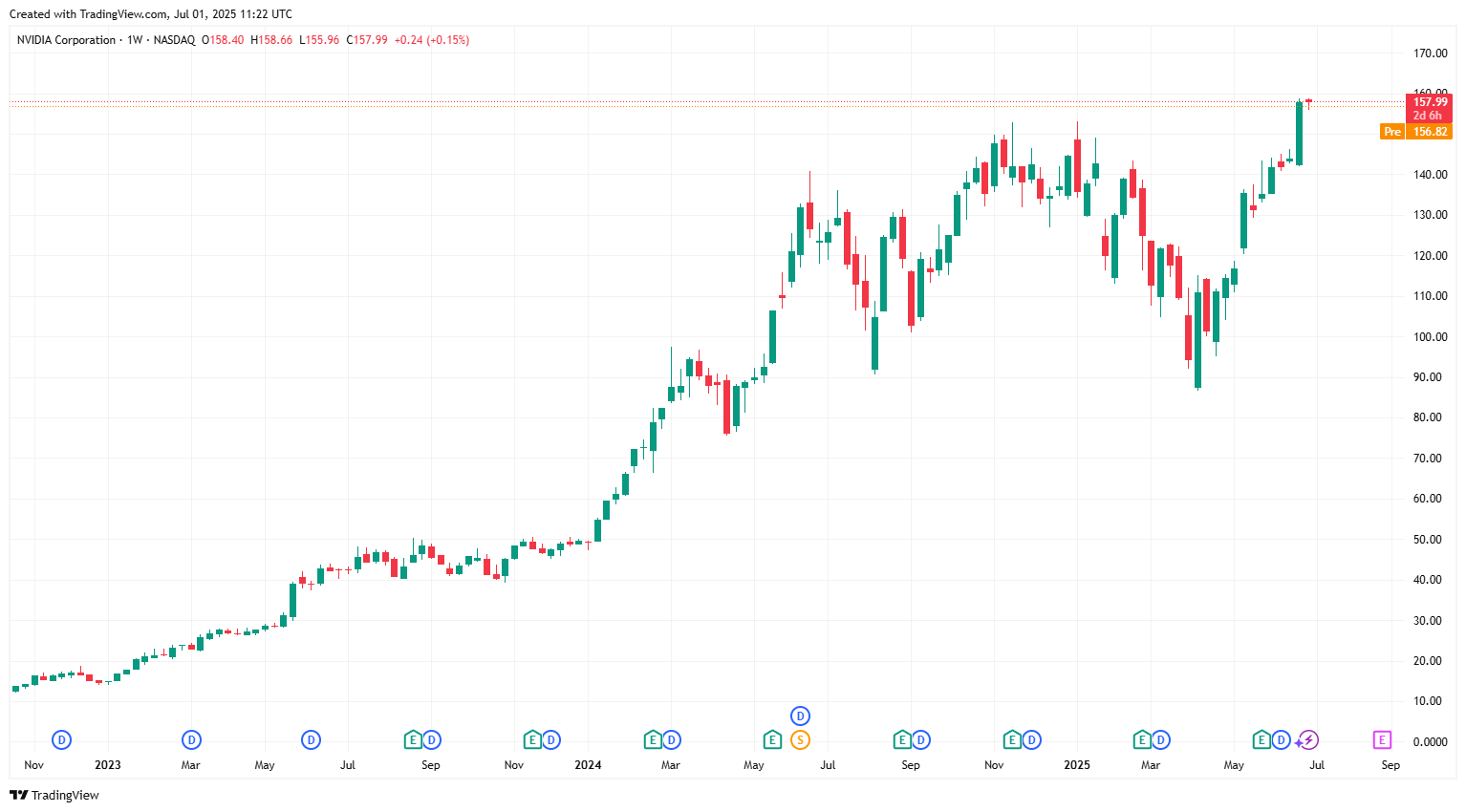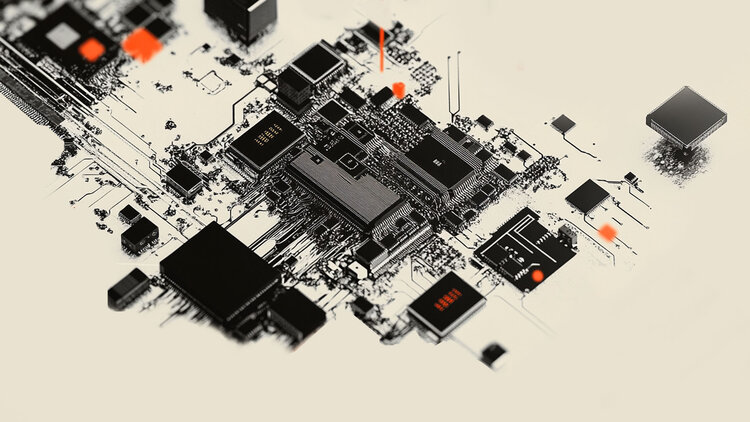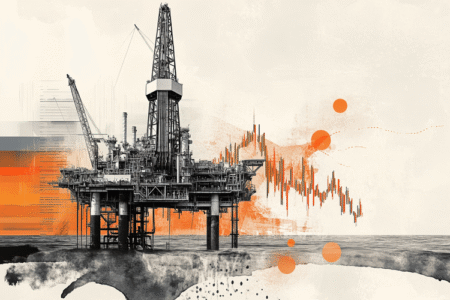The US stock market has just set new all-time highs, buoyed by a technology wave dominated by artificial intelligence (AI). The Nasdaq and S&P 500 have erased a violent spring correction in a matter of weeks, and this spectacular recovery owes much to a clearly identified group: tech giants and AI stocks.
But is this euphoria solid… or does it rest on foundations that are more fragile than they appear?
The return of AI stocks
Since mid-April, US indices have rallied with remarkable strength. The Nasdaq has rebounded by over 33%, the S&P 500 by 24%, and even reached all-time highs at the end of June. At the heart of this recovery, Nvidia (NVDA), Microsoft (MSFT), Apple (AAPL), Meta (META), Amazon (AMZN) and other artificial intelligence stars.
Already a market driver in 2023 and 2024, AI stocks are more than ever a catalyst this year. The Roundhill Magnificent Seven ETF, which includes the technology giants, has surged 31% since the beginning of April. The iShares Semiconductor ETF, which covers chip manufacturers, jumped 44% over the same period.
In addition, the Technology sector’s performance has doubled the US market over the past three months, according to Morningstar indicators.

These figures testify to investors’ renewed enthusiasm for AI stocks despite an uncertain geopolitical context.
Nvidia leads the stock market
Nvidia best embodies this dynamic. After briefly overtaking Apple in market capitalization, the company headed by Jensen Huang is now on par with the peaks, with a valuation of $3,850 billion at the end of June.

Nvidia stock price chart. Source: TradingView.
According to Loop Capital forecasts, Nvidia could be the first company to break through the symbolic $4,000 billion barrier, and reach $6,000 billion in the medium term.
Its success is based on the explosive demand for GPUs (Graphics Processing Units) for AI data centers.
The new Blackwell chips, successors to the H100, are being sold at record prices and remain in short supply, such is the demand from companies, governments and start-ups.
According to Loop Capital, Nvidia could ship 6.5 million GPUs this year and 7.5 million next year, with an average price of around $40,000 per unit.
Microsoft, Meta, Apple: the other side of AI stocks
The winners of the AI revolution are not just to be found in semiconductors. Microsoft, for example, is leveraging its strategic partnership with OpenAI. The company has exceeded 10 billion in AI-related revenues, notably via Azure and Copilot, according to Investor’s Business Daily.
Meta, for its part, has just created a laboratory dedicated to “superintelligent” artificial intelligence by massively recruiting renowned researchers, sometimes poached from OpenAI.
Even Apple, long criticized for lagging behind in the field, seems to be changing its strategy, as Bloomberg has just revealed ongoing discussions to integrate OpenAI or Anthropic models into Siri, in what could become a turning point for the company.
Other big names are taking part in this AI rush. Amazon is investing in cloud services optimized for generative models, Alphabet (GOOG) is multiplying AI integrations in its products, while IBM (IBM), Oracle (ORCL), Dell (DELL) and Super Micro Computer (SMCI) are taking advantage of the growing demand for infrastructure and computing power. The ecosystem is expanding rapidly, far beyond the tech giants alone.
A macroeconomy that supports the stock market
Beyond AI, several favorable winds are blowing through the markets: de-escalation in the Middle East, trade agreements – albeit sometimes partial – with China and the UK, for example, and the prospect of interest rate cuts by the US Federal Reserve (Fed) in the months ahead.
The US economy remains solid, with GDP growth close to 4% in the second quarter, according to the Atlanta Fed GDPNow estimate..
Corporate earnings are supporting this momentum. The S&P 500 has enjoyed eight consecutive quarters of earnings growth, with a 4.9% gain expected for the second quarter, according to FactSet data picked up by CNBC.
What’s more, AI spending remains a priority for large companies, despite fears of overinvestment.
Towards an AI-driven second half of the year?
The enthusiasm surrounding artificial intelligence remains the main driver of this market phase. The construction of data centers, the explosion in computing power requirements, massive investment in infrastructure and the global AI race continue to fuel investor appetite.
But this growing dependence on a small group of companies also raises questions. The market is expensive, with the S&P 500 trading at nearly 23 times expected earnings, according to Barrons, and an underperformance by a leader could weigh heavily.
AI still seems far from its ceiling. But if it is the essence of this rally, it is also its main risk. The month of July, with its key deadlines (trade tariffs, employment, inflation, earnings season), will tell whether this engine can continue to propel the markets… or whether it is starting to run hot.
Read the full article here















